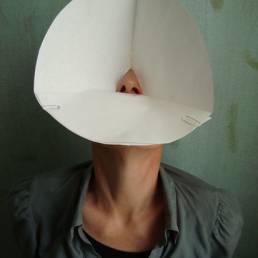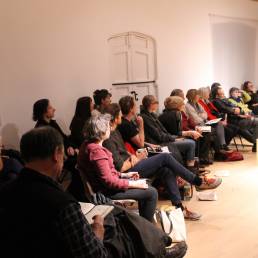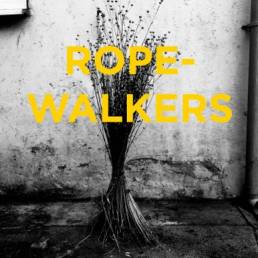Show and Tell, Simon Lee Dicker and Rebecca Strain
The Old School Room, West Coker, Yeovil
19 – 29 January 2012
“Like the African shaman who chews his pepper seeds and spits seven times into the air, I believe art re-ritualizes the everyday to reveal something fresh about our lives. This revelation is a vitality and it is a power to change the world.”
William Pope L (Foundation for Contemporary Arts Fellowship bio, 2002)
I became interested in Pope L’s work at the beginning of my MA studies in 2010. His vision of art as a powerful tool to reveal something ‘fresh’ through a process of re-ritualization seemed like a truer reflection of my own goals as an artist than the Oxford dictionary definition of an artist as a person who creates paintings or drawings as a profession or hobby.
The aim of this project was to challenge and inspire in equal measure and that, through creative activity, the Old school Room would return to its roots as a space for learning, meeting, socialising and participating. I realised we’d achieved this when Ross, a local of West Coker, came up to me at the launch party and congratulated us for creating a new reason for coming together and a new way of learning.
As a contemporary artist interested in dialogical practice creating work that was evidence of a process rather than a finite object certainly challenged the visitors’ understanding of current art practices. Each of the pieces in the show had a narrative which began with the stories and objects shared with Simon. Traces of this collection where exaggerated or hidden by the installation which took up the entire room but remained open enough for visitors to wander through and inspect its component parts freely.
The narrative became most obvious when the local school children visited for a workshop later in the week. They easily recognised familiar objects, desks, gloves, weighing scales and maybe the tail of a kite. It was enough for them to find a way into the work and come to an understanding of the process of taking truths and subverting them to create a story for today. We offered them objects to create their own narrative based installation and they took the idea and ran with it; illustrating stories of the school mouse who stole from the space, and a boy who used his long neck to peep into peoples’ gardens, among others.
As an artist coming into an unfamiliar space I was completely reliant on information from my collaborator who in turn gathered information from those who volunteered it. Accuracy of information is clearly not the priority for this project, so what is?
In 1967 Bruce Nauman declared in neon “The True Artist Helps the World by Revealing Mystic Truths”, which whether true or not does tell us about the relationship and interdependency between artist and public. Working collaboratively meant that for me I was depending on Simon to share information; who in turn was depending on the public to volunteer stories and information. The public then depend on us as artists to share the result of our creative process using their contributed materials completing a spiral of interdependency.
I’ve had a number of experiences of collaborative projects. Some have been formal, involving numerous collaborators from a range of artist disciplines, others have been short circumstantial encounters where we each had specific skills to contribute and others have been long term relationships with visual artists who share a similar interest in materials and process. This collaboration has been different again. The most interesting aspect of working together is that the process and outcome looks different to the work I make alone or even the work where I instigate participation from the public. Certainly on this occasion the work I produced seemed initially as unfamiliar as the space to me.
It was only on Monday at The Long Lunch, an event we organised to disseminate the dialogue we had started with a selected group of artists from the South West region, that I began to become familiar with what I’d produced. There were two things that struck me. The coming together of people to share experiences and learn about contemporary artist practices and collaboration in the region over lunch and the development of the work from static objects to per formative objects.
Firstly during the presentations artist Jonathan Shelper shocked the group by using one of the school desks previously used in the installation as a faux attempt to conceal a bottle of whiskey that he proceeded to gulp down as he talked about his work. The careful closing of the desk got steadily more clumsy as he got more intoxicated and I was reminded of my experience in school when students and teachers alike used these old style desks to add dramatic effect to the learning process; slamming the lid to emphasise a point. Luckily it turned out to be iced tea and not whiskey much to the relief of everyone present.
Secondly it was suggested that we make use of the opportunity to create a collaborative piece of work. I was making tea when the idea was shared but word soon got around that we were attempting to recreate the photograph of the Christmas party included in the Museum of Occasions’. This piece had come about from the collection of images given to us by the locals. At the beginning of this project I had been intrigued by these images and Simon and I had discussed the possibility of recreating the image but given the timings it didn’t look doable. We decided to park it and if an opportunity came up then we could make it happen. It now seemed like it would happen organically.
As the group searched for materials to create costumes the objects installed in the exhibition seemed to have the necessary elements for such a transformation. The ribbon from ‘Unnamed’ was needed and so with the snip of the scissors the structure was no more. The concealed paper inside was now free to be revealed. I unveiled my paper baby, posed for photographs and passed it around as though it were a cherished new being. Its fragile state caused it to have a brief life but never the less it lived for a short time at least.
The process of recreating this particular image required a series of decisions to be made. This process may have benefited from a choreographer but as one was not at hand we worked together and contributed what we could so that eventually things came together. Leadership changed hands frequently; a changing group of people took the lead on sourcing materials and making props and costumes as well as layout of the image and the practicalities of recreating a group of around 40 people from a group of ten. Sometimes the photographer lead (I should mention the photographer naturally changed from time to time without this being verbally agreed) at other times the subjects of the photograph led the direction of the work with their hilarious interpretation of the characters in the original photograph and at other times the props themselves led the process like the Santa Clause made out of one of the blown up gloves.
Going back to the original aim of the project to challenge and inspire in equal measure. It is evident from the three events; the launch, the school workshop and the long lunch that visitors to the space were confronted with something that required them to pause and consider how this installation of objects had come about. There were clues in the objects themselves as well as in their titles and the short overview of the project displayed on the wall and in the leaflets available. I am glad to have been present at all three events to aid the investigations by the visitors and receive their insights. The blog too offered a ‘sneak peak’ into what might be happening challenging those who did not visit the space to consider the kind of work being produced outside of the city.
The second aim of the project was to facilitate the return of the Old School Room to its roots as a space for learning, meeting, socialising and participating. Through our dialogue Simon and I developed the narrative of the space and with due respect to its past, cast a creatively subversive eye on its 161 year history to re-present it and create a new way of seeing the space. As far as learning is concerned I am not in a position to say whether the visitors learned something but I can be subjective. The impact that this opportunity has had on my practice and current research as a master’s student at AUCB is notable.
Since moving to the South West I’d used the transition to focus on my practice as an isolated artist. I’d found this both challenging and rewarding but I craved the input of a collaborator. I tend to be dissatisfied with work made in isolation. The monologue with me as an artist, producer, researcher and curator is limited and the processes can become either predictable or overcomplicated, compensating confidence in the concept with overproduction. Working with another artist has encouraged me to trust the concept and go forward with it. Although I strive to make simple work it is unusual that this is what is actually realised. Working with Simon has taught me to go with what works.



